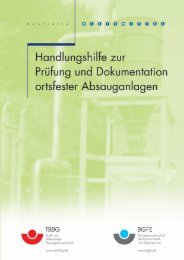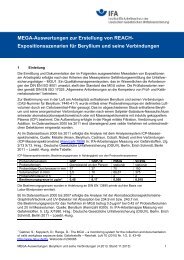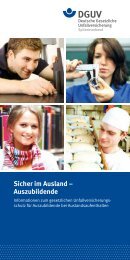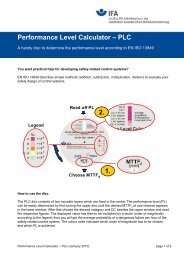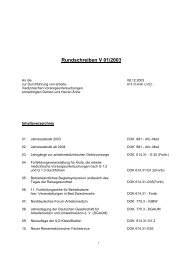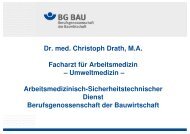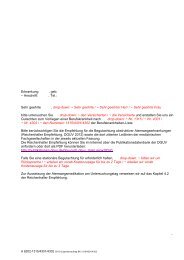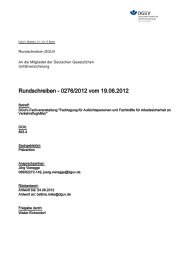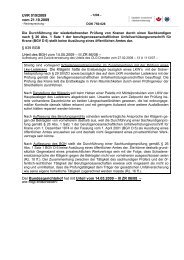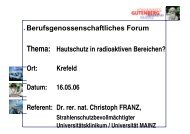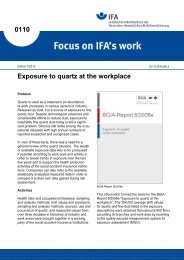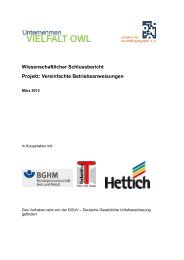Effectiveness of measures to prevent needlestick injuries among ...
Effectiveness of measures to prevent needlestick injuries among ...
Effectiveness of measures to prevent needlestick injuries among ...
Create successful ePaper yourself
Turn your PDF publications into a flip-book with our unique Google optimized e-Paper software.
Preface<br />
Preface<br />
It has long been recognized that <strong>needlestick</strong> and other <strong>injuries</strong> from sharp objects<br />
place healthcare workers at risk <strong>of</strong> infection. The most common pathogens carried in<br />
body fluids are hepatitis B virus (HBV), hepatitis C virus (HCV), and the human immu-<br />
nodeficiency virus (HIV).<br />
Infections caused by occupational exposures are costly in terms <strong>of</strong> human suffering,<br />
the social-economic impact, and the financial responsibilities borne by accident insur-<br />
ance institutions. In recognition <strong>of</strong> these burdens, <strong>prevent</strong>ion <strong>measures</strong> have been the<br />
focus <strong>of</strong> hazard reduction for health care pr<strong>of</strong>essionals. For example, German em-<br />
ployers have been obligated <strong>to</strong> provide free HBV immunization for as long as an ef-<br />
fective vaccination has been available, since 1982. The legislation mandating free<br />
HBV immunization was originally part <strong>of</strong> accident <strong>prevent</strong>ion regulation 103 “Health<br />
and Welfare”, and in 1999 was incorporated in<strong>to</strong> the “Biological Agents Ordinance”<br />
(Biost<strong>of</strong>fverordnung). Not all eligible employees agree <strong>to</strong> be vaccinated. Unfortunately,<br />
there are no effective vaccines currently available <strong>to</strong> protect against HCV and HIV.<br />
Therefore, additional <strong>prevent</strong>ive <strong>measures</strong> that focus on technical changes <strong>to</strong> equip-<br />
ment must also be implemented.<br />
Safety engineered sharp devices have been available in the US since the late 1990s,<br />
and their use was formalized in<strong>to</strong> law by the “Needlestick Safety and Prevention Act”<br />
<strong>of</strong> 2000. Similarly, the use <strong>of</strong> safety engineered sharps was mandated in Germany by<br />
the Technical Rule 250, “Biological Agents in Health Care and Welfare Facilities”<br />
(TRBA 250). The TRBA 250 was developed by the Committee on Biological Agents<br />
(Ausschuss für Biologische Arbeitsst<strong>of</strong>fe, ABAS) <strong>of</strong> the German Federal Ministry <strong>of</strong><br />
Economics and Labour, in cooperation with the expert committee on Health Care and<br />
Welfare <strong>of</strong> the Federation <strong>of</strong> Institutions for Statu<strong>to</strong>ry Accident Insurance and Preven-<br />
tion (HVBG). In paragraph 4.2.4 it is demanded that spike, sharp or breakable<br />
devices should be replaced by suitable devices or methods which have no or low risk<br />
<strong>of</strong> <strong>needlestick</strong> <strong>injuries</strong>. The TRBA 250 further stipulates that model or evaluation pro-<br />
jects demonstrating equipment effectiveness must be considered when devices are <strong>to</strong><br />
be introduced in<strong>to</strong> a workplace.<br />
Report „Needlestick <strong>injuries</strong>“ 11



